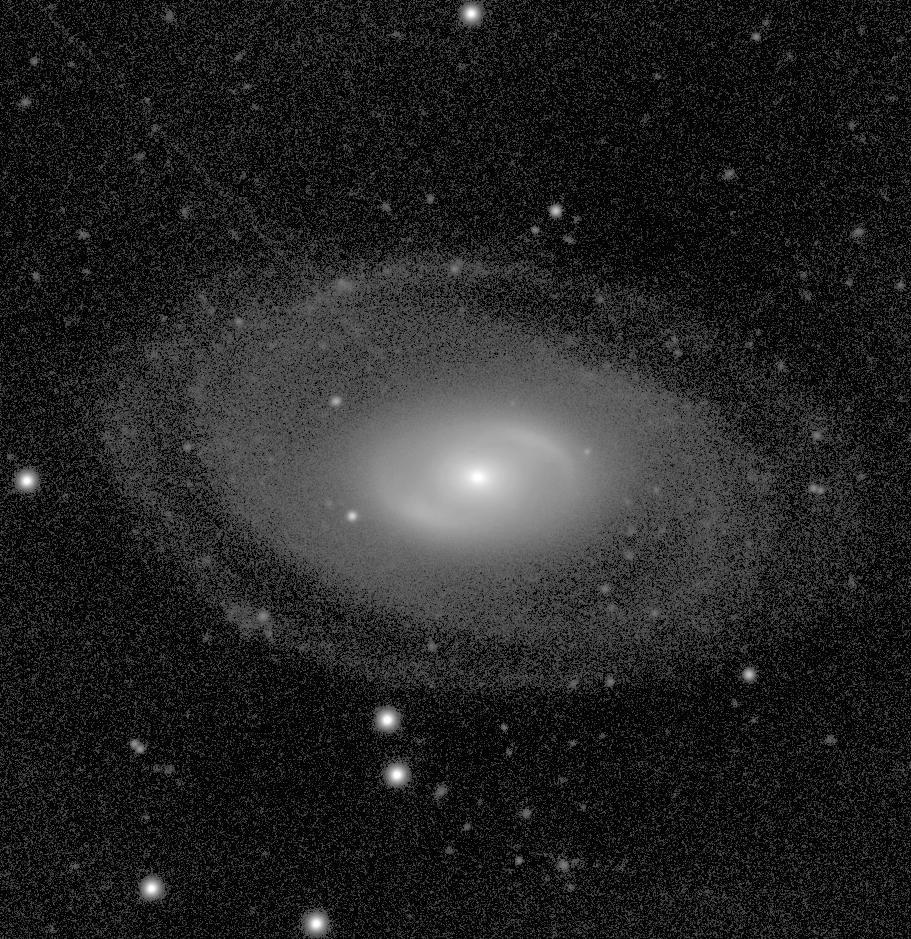

De Vaucouleurs Atlas Type: (R1R2')SAB(rs)a
Filter: BV sum
Telescope: CTIO 1.5-m
North up , East left
Field Dimensions: 6.6 x 6.6 arcminutes
RC3 Type: (R)SAB(rs)0/a pec
RSA Type: Sa(s)
Surface Brightness Range Displayed: 18.0-28.0 mag per square arcsec
Absolute Blue Magnitude: -19.0
De Vaucouleurs Atlas Description:
The SB94 classification fails to provide any hint as to the interesting structure of this large southern early-type spiral. Also, the reason for the pec classification in RC3 is unclear, as the galaxy is not peculiar at all. To improve signal-to-noise ratio, the image is the sum of a B and a V image, calibrated as B-band.
This is the largest and best-defined example of the R1R2' morphology in the sky. The R1 ring is a distinct, closed feature showing characteristic dimpling in the zones close to the major axis of the weak bar. The R2' is a strong pseudoring made of two faint arms breaking from the R1 ring. When deprojected, the R1 ring is aligned perpendicular to the bar. Both outer features appear lightly patchy and include recent star formation (see also Caldwell et al. 1991). In contrast, the inner zone is a very smooth region including mainly a bright bulge and an inner ring of nonuniform brightness. The ring is almost complete, but since it is very weak on opposing sides, we use the underline notation . There is no clear bar crossing the inner ring . However, the ring is bright on opposite sides of the nucleus, and these bright zones are undoubtedly curved ansae associated with the bar. Because of the ansae , the inner ring looks more like a pseudoring. The bar is somewhat foreshortened by tilt and is less distinct as a result.
Like NGC 3081 , NGC 1079 is another example of a four-ring galaxy. Maoz et al. (1996a,b) report the discovery of a very small (4'' angular or 330 pc diameter) nuclear ring in an HST ultraviolet image. The ring is too small to be noticed easily in the Atlas groundbased image, and ranks as one of the smallest such rings known.